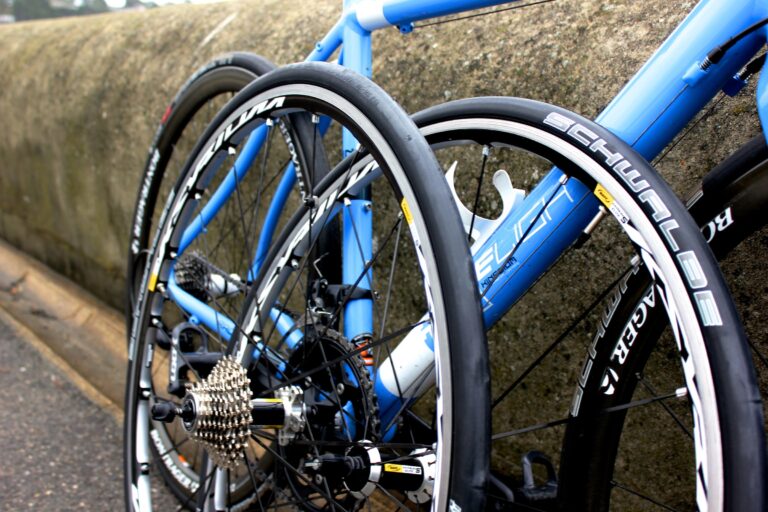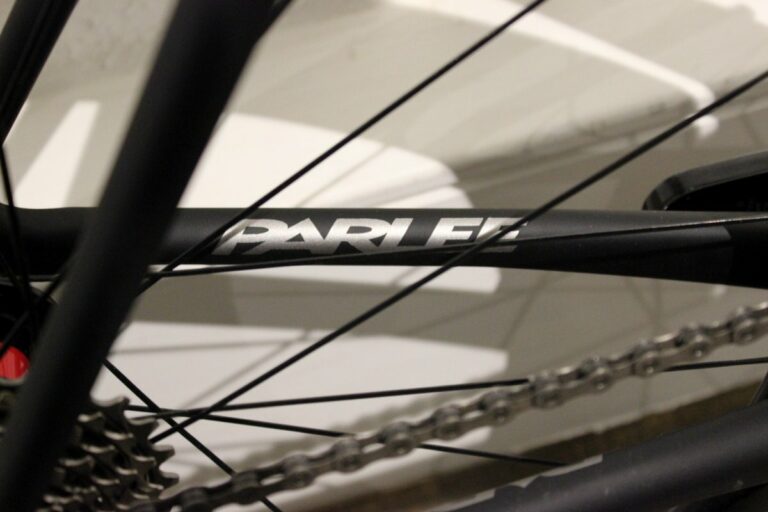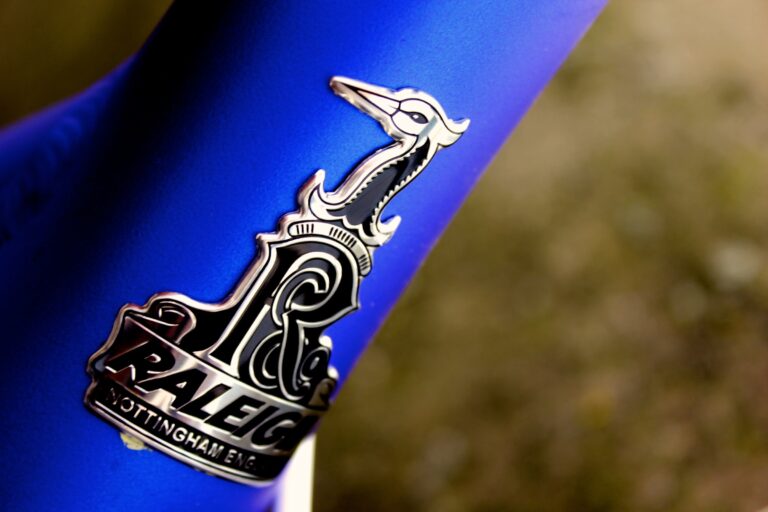The Mavic Cosmic Carbone 40C wheelset combines an aerodynamic rim and reliable braking with reasonable weight in what is a thoroughly useable ‘everyday’ carbon clincher.
It’s not perfect; the claimed aero performance is not as great as some of its competitors, the price will be a sticking point for some, and we’re indifferent about the the tyres provided as part of the ‘wheel system’, but Mavic have taken a generous helping of everything it takes to produce an excellent carbon clincher.
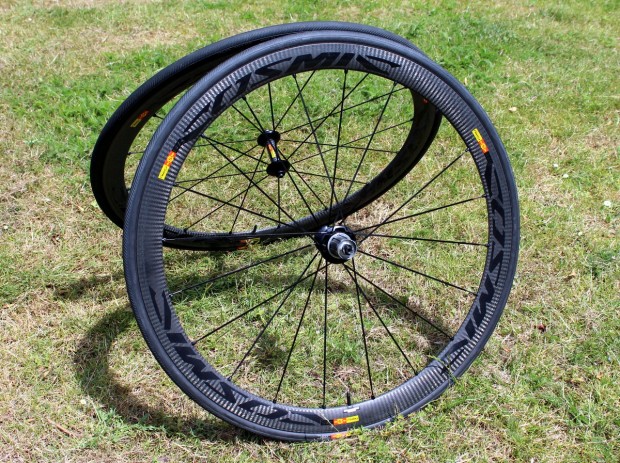
It’s a market segment with something of an, erm, unreliable, history. Carbon clinchers have traditionally suffered from being heavier than tubulars, with inconsistent braking (particularly in the wet) and, most pertinently, the potential to suffer catastrophic failure due to overheating.
That doesn’t sound much of a draw but it’s a segment that has grown quickly, with the convenience of clinchers over tubulars one significant factor, along with the fact that a carbon rim can be moulded into a more aerodynamic profile than an aluminium equivalent, and, perhaps most significantly, carbon wheels just look good.
However, Mavic, the best-known wheel manufacturer in cycling, held back from launching a carbon clincher, citing safety concerns, but now the Cosmic Carbone 40C has arrived after three years in development.
Shimano are among the few manufacturers yet to dip their toe in the water, and the Japanese firm told RoadCyclingUK they refuse to do so until their own concerns have been allayed.
But Mavic claim they’ve won that race, calling the Cosmic Carbone 40C the “world’s first reliable carbon clincher.” It’s important to point out from the start, however, that it’s not a full carbon clincher, and the wheel effectively remains a carbon/aluminium hybrid, just not as we know it. The carbon/aluminium construction is at the heart of the wheel’s reliability.
We ran through the wheelset’s technical features in our first look, so we’ll largely concentrate on performance here, but it’s worth quickly recapping on the Cosmic Carbone 40C’s key innovation.
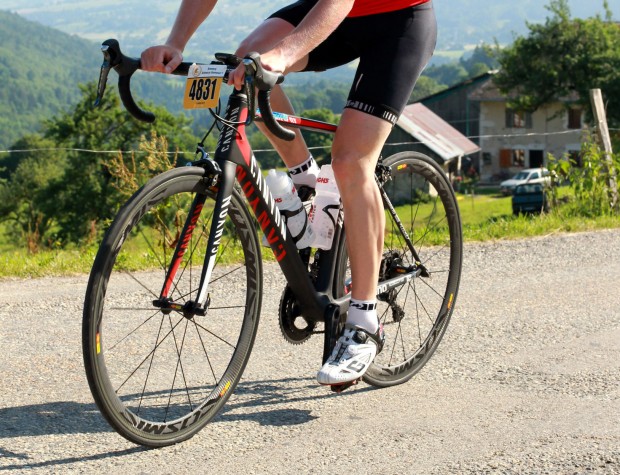
The Cosmic Carbone 40C uses a lightweight aluminium insert (which in itself wouldn’t be strong enough to build a complete aluminium rim), which forms the rim bed and tyre bead hooks, and is therefore designed to dissipate heat while maintaining the structural integrity of the rest of the wheel. A foam core is used beneath the insert, and above the inner edge of the rim, as it is light, strong and heat resistant, and both the core and aluminium insert are then wrapped in carbon fibre.
Mavic have also used a resin, dubbed TgMax, on the braking track which is resistant to high temperatures, though that’s now a fairly common treatment among reputable carbon clincher manufacturers. It’s the combination of the two – the rim construction and TgMax – which Mavic say results in the “reliability” that is the Cosmic Carbone 40C’s headline claim.
Does it work? Well, the only way we’d know it doesn’t work is by suffering a failure (and that normally manifests itself as an inner tube blowout), and that, thankfully, is not something that’s happened during the course of our four-month review period. We can only vouch for that reliability to that extent.
The most important test came in the Alps during the Etape du Tour sportive, when the rim was subjected by significant braking on long descents, ridden among unfamiliar riders, thus requiring a more careful – and slower – descent than being able to carve a lone path down the mountain. It was during the Etape that the wheels let out a high-pitched screech under heavy braking on one particularly technical descent, though this was early in our test, with fresh rims and new brake pads which had not yet had much chance to bed in. It soon abated and didn’t remain a problem through the rest of the review period.
Needless to say, Mavic conducted their own field and lab ‘reliability’ tests during development, which saw the Cosmic Carbone 40C subjected to constant ‘dragging’ of the brakes on a 10km downhill section of Mont Ventoux with a 100kg rider on board. The video below runs through the manufacturing and testing process in more detail.
The wheels are also reliable in that braking performance is powerful (with plenty of bite) and consistent in almost all weathers. Mavic say the heat-dissipating resin used in the braking track contributes to this and it’s the type of consistent braking that allows you to brake later into a corner.
Carbon clinchers have also traditionally suffered in wet weather, when the braking performance can be significantly reduced to the extent that it’s downright scary. Some manufacturers have taken great strides forward on his front – we’ve previously been impressed by the performance of the Reynolds’ Attack wheels – but the Cosmic Carbone 40C’s are the best we’ve tried to date.
Mavic say they’ve been able to reduce braking distance in wet conditions by 50 per cent compared to rival carbon clinchers. We can’t verify head-to-head performance but can say that braking performance is very good in most conditions. That said, in the very worst weather (and one three-hour test ride conducted in consistent, heavy rain on greasy lanes springs to mind), when the rim and brake pads also have to contend with significant grime thrown up from the road, we would still feel more comfortable on an aluminium clincher, though that is equally an indication of the failings of rim brakes in such conditions.
Mavic supplied our test wheels with Swissstop’s excellent carbon-specific Yellow brake pads, which undoubtedly contributed to the confidence-inspiring braking performance. They did, however, leave a yellow track on the rim, though this could be removed easily enough by washing.
We’ve got this far into a review of what is essentially an aero wheelset without talking about aerodynamics, such is the importance of reliability and consistent braking in a carbon clincher. As the name suggests, the Cosmic Carbone 40C’s rim is 40mm-deep, and it has a noticeably rounder profile than previous Cosmic rims.
The rim has an internal width of 19mm, which isn’t especially wide considering the current trend that ‘wider is more aero’ (the Easton EC90 Aero 55 has an internal width of 21mm, for example), nor is 40mm particularly deep, but Mavic are fairly honest in their description of the Cosmic Carbone 40C as a “versatile aero wheelset”, offering, they say, good all-round aerodynamic performance at a range of yaw angles, rather than necessarily being the most aero wheelset on the market. We don’t have a wind tunnel to verify any aerodynamic claims, but these are fast wheels, which hold their speed very well.
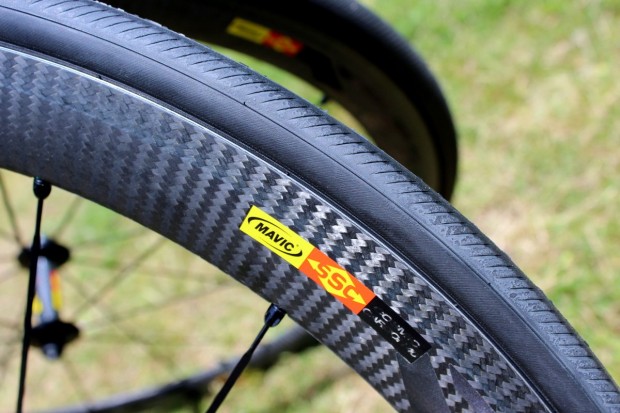
Weight is a claimed 1,545g for the set, though ours were just shy of 1,600g. That’s still respectable for a carbon clincher of this ilk, though heavier than the Zipp Firecrest 303 (1,475g claimed) and Bontrager Aeolus 3 (1,440g), which, in turn, aren’t as deep.
But low weight isn’t the primary concern of a wheelset like this. While the Cosmic Carbone 40C’s don’t accelerate as freely as a featherweight climbing wheelset (and why would it?), pick-up and stiffness was excellent, and wheels feel more lively than their 1,600g weight. We certainly didn’t feel like we were at a significant climbing disadvantage when slotting these wheels in for a mountainous ride like the Etape, particularly when paired with the superb Canyon Ultimate CF SLX (which made for a very lightweight package), nor did we experience any brake rub when sprinting or descending.
Mavic sell the Cosmic Carbone 40C as a wheel-tyre system and the hoops are provided with their front and rear-specific Yksion Pro Griplink and Powerlink rubber. The tyres are fairly light at a claimed 195g and 215g respectively, roll well and provide good levels of grip in the dry, though we were less impressed in the wet. They’re also narrower than their stated 23mm, which reverses another trend that ‘wider is better’ (superior aero performance when combined with a wider rim, and more grip thanks to an increased contact patch). We’d also love to see the Cosmic Carbone 40C offered as a tubeless-ready wheel (and, of course, with tyres to match) but Mavic’s inherent conservatism may render this as something which is a fair way down the line.
All that’s left to mention, then, is the price. At £1,800 the wheels are roughly in-line with rival offerings, though Mavic are offering a set of Aksium S training wheels, worth £220, for £1 when you buy a set of Cosmic Carbone 40C, Cosmic CXR 80, Cosmic CXR 60 or R-Sys SLR hoops before November 30.
Conclusion
Buying a set of Mavic Cosmic Carbone 40C wheels is a significant outlay considering they are neither the lightest nor the most aerodynamic hoops on the market – but reliability and braking performance trumps all other concerns when it comes to a carbon clincher. The fact that these hoops remain very competitive in both of these key areas only underlines their position as a truly versatile carbon clincher. And they look great, too.
Price: £1,800 (including tyres, skewers and wheelbags)
Website: Mavic

